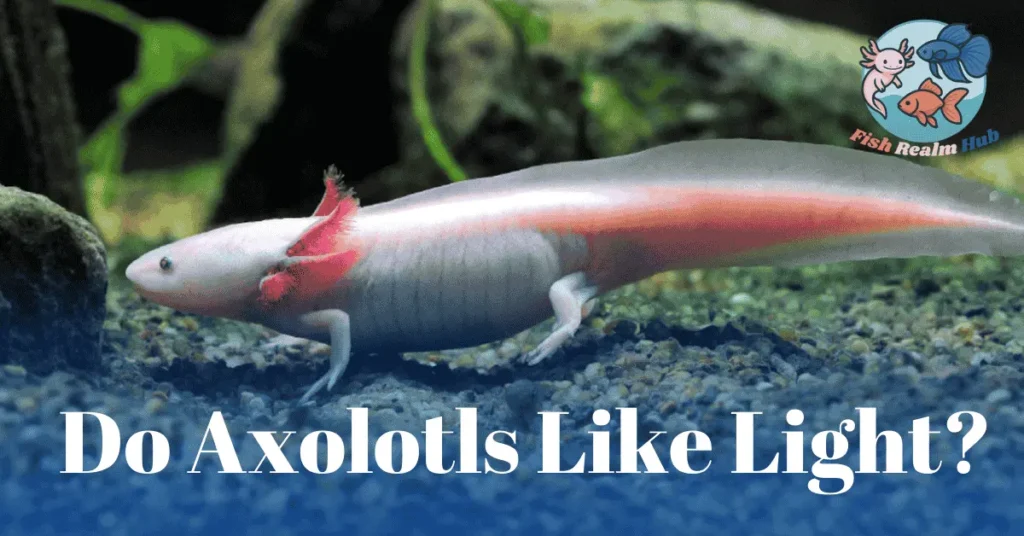When it comes to care, understanding lighting needs is among the key aspects for keeping axolotls healthy. These fascinating pets are known not only for their distinct appearance and remarkable regenerative abilities, but also for their sensitivity to light.
Originating from the shaded waters of Mexico City’s lakes, these creatures have specific lighting preferences that should be respected. Mimicking their natural environment by maintaining clear day cycles and night cycles, along with providing sufficient hiding spots, ensures their well-being and comfort.

Through personal experience, I’ve found that axolotls seem happiest when their surroundings closely reflect the dim and tranquil conditions they naturally inhabit.
Setting up the right habitat is essential for your axolotl’s comfort and health.
If you’re unsure where to begin, this Axolotl tank setup guide can help you get started the right way. Once the tank is ready, you might want to explore some creative Axolotl tank decor ideas to make the space both functional and visually pleasing for your aquatic pet.
Do Axolotls Like Light
Many people are surprised to learn that axolotls, though they are unique among amphibians, do not enjoy bright lights. These animals are especially sensitive because they have no eyelids, making even mild exposure uncomfortable. In their natural habitat, the murky waters of Lake Xochimilco and Lake Chalco, they are accustomed to low light conditions and shaded areas that protect them from direct light.
I’ve noticed in my own tanks that prolonged exposure to intense lighting causes clear signs of stress and discomfort, which affects their overall health.When setting up an axolotl aquarium, it’s important to create an environment that minimizes exposure to harsh lighting and provides options to hide.
In the wild, their native environment includes canals and waterways around Mexico City, which are relatively shallow. Though they get sunlight, there’s plenty of shade from aquatic plants and floating plants, as well as rocky areas where axolotls can swim and hide. Mimicking these conditions in a home tank keeps them comfortable, especially if you include dark hides where they can take a break from the light.
Since axolotls are nocturnal, they are averse to very bright lighting, especially at night. Their small, sensitive eyes make them easily startled, and light left on all night may disturb their sleep cycles. While there are a variety of reasons to add lighting to a tank, it should always be used thoughtfully to avoid harming your pet.
Which Light is Best?
In my experience raising Axolotls, I’ve noticed they feel calmer when the lighting in their tank changes slowly. Sudden bright artificial light from a standard aquarium unit can startle them, especially during the morning or night.
That’s why choosing an adjustable Hygger light made a huge difference in my setups. It provides full-spectrum lighting with the right intensity for optimal plant growth, and it also includes a timer feature that helps create natural cycles of sunrise and sunset.
This helps avoid sharp temperature rising and keeps the heat under control.The best part? The 24/7 mode makes gradual adjustments, so the color and brightness shift gently from dark to light and back again, mimicking what axie would experience in nature.
In our breeding colony, the animals really appreciate this change, and many users agree it improves the environment for axolotls. And when you think about the price, it’s surprising how well this single unit supports both pet comfort and planted aquariums.
Mimicking Natural Day and Night Cycles
To keep axolotls relaxed, I always try to simulate the day and night cycles they’d experience in Mexico City. This helps replicate their natural environment, and simple tips like using soft lighting can really achieve that effect.
Here are a few suggestions to help make this happen.
Adjusting Light Intensity
I always use low-intensity aquarium lights that are specially designed for nocturnal species like amphibians, as they provide just enough illumination to view my axolotls without being too overwhelming for them.
Managing the Photoperiod
I set my aquarium lights on a timer to follow the natural day and night cycles, just like in Mexico City, with around 12 hours of light and 12 of darkness, which I adjust seasonally to mimic yearly variations as desired in the schedule.
Choosing Gentle Natural Light
If possible, I always avoid placing the aquarium tank in direct sunlight, as it can increase light intensity and water temperature, both of which may be harmful to axolotls. Instead, I pick a location where the tank can receive indirect natural light to keep them safe and calm.
Providing Hiding Spots
Because of their sensitivity to light, axolotls need easy access to hiding spots in the aquarium to help them escape the bright glare that often comes during midday when light intensity is at its peak.
From my experience, providing such shelters not only helps reduce stress, but also makes them feel secure in their environment. There are many effective ways to create these cozy corners, like using logs, caves, or plants—anything that gives them relief from the light they dislike.
You can use several smart methods to set up hiding spots.
Aquarium Decorations
To help your axolotl feel safe from strong light, it’s smart to create shaded areas using the right aquarium-safe decorations. I often use caves, logs, and plants inside the aquarium because they not only look natural but also give hiding spots that prevent stress.
Always ensure the items you choose are smooth, free from sharp edges, to prevent injury while your axolotl explores. Choosing the right decorations helps turn your tank into a safe and peaceful home.
Aquatic Plants
I always incorporate both live and artificial plants in the tank because they provide perfect hiding spots and contribute to a more natural, aesthetically pleasing environment that keeps my axolotl calm and happy.
I always incorporate both live and artificial plants in the tank because they provide perfect hiding spots and contribute to a more natural, aesthetically pleasing environment that keeps my axolotl calm and happy.
Unique Hiding Options for Axolotls
I always consider adding specially designed hides that are made for axolotl comfort, often available at pet stores. These hides mimic natural rock formations and provide ample cover for your pet, making them feel safe from bright light.
Smart Substrate Picks
Using a soft substrate like fine sand can allow axolotls to burrow slightly, offering a gentle form of cover when avoiding light. Many owners consider sand the best substrate for axolotl tanks because it’s safe and comfortable. It’s best to avoid gravel, as it can be ingested and cause harm, though this is a lesser chosen route, I’ve seen axolotls do it for comfort.
Monitoring Light Exposure
I always monitor the light exposure in my axolotl’s tank regularly to ensure it remains at comfortable levels. It’s important to watch for signs of stress, like your axolotl spending excessive time in hiding spots or showing reduced activity. If you notice these changes, consider adjusting the light intensity or increasing the number of shaded places to help them feel safer.
Conclusion
Axolotls are sensitive to light and don’t thrive in bright, direct illumination, so to ensure their well-being, it’s essential to create a low-light environment that mimics natural day and night cycles like those in Mexico City, using low-intensity lighting, a proper photoperiod, and providing ample hiding spots to build a comfortable, stress-free habitat where your pet can be healthy, happy, and a source of unique companionship, even if having a light isn’t a hard must, it’s still useful to achieve certain purposes when setting up a good tank and appreciating the full experience.
Faqs
Should I leave a light on for my axolotl?
You should avoid direct or strong lighting in your axolotl’s habitat, as it can cause stress and discomfort. Instead, use ambient or dim light, which is more ideal for their peaceful environment. If lighting is truly necessary, choose low intensity options, and make sure the tank can provide plenty of hiding spots like caves or plants, where your axolotl can safely retreat from light exposure.
Can I put a light in my axolotl tank?
You can add low to moderate lighting in your axolotl’s tank, as axolotls prefer dim light and bright lights may cause stress. A good option is using LED lights, which produce less heat and can be adjusted for brightness. Try to aim for around 10-12 hours per day to mimic the natural day/night cycle, and always avoid direct sunlight to keep them comfortable.
What will make my axolotl happy?
Axolotls don’t need too much to be happy, but I’ve seen that changing their scenery once in a while keeps things interesting for them. You can add sand or moss balls to the tank—I’ve watched mine play with these, and it gives them some extra enrichment they really enjoy.
Do axolotls like being in the dark?
Axolotls are usually not a big fan of bright lights, and I’ve noticed they seem happy when they get a break from it. They’re more active at night and love being in the dark, which makes sense given their natural habits.

